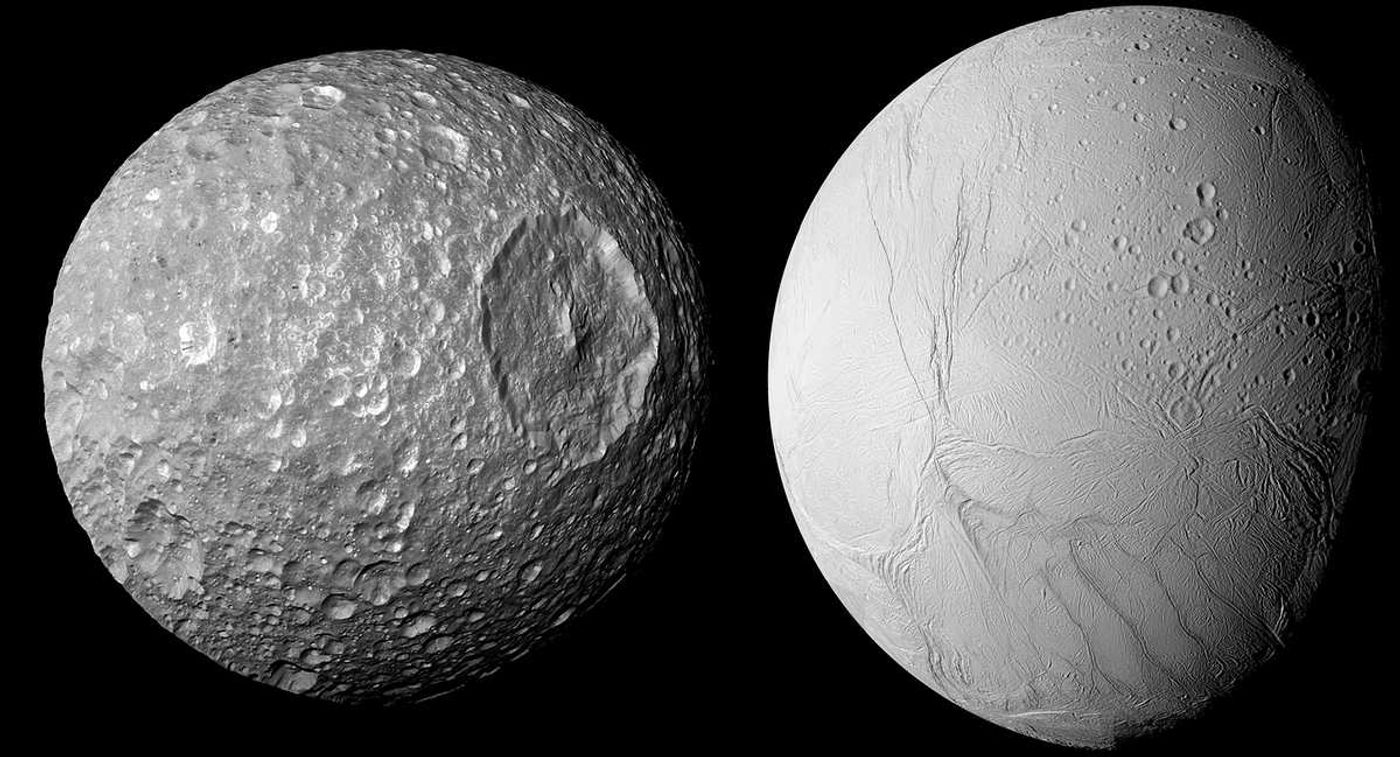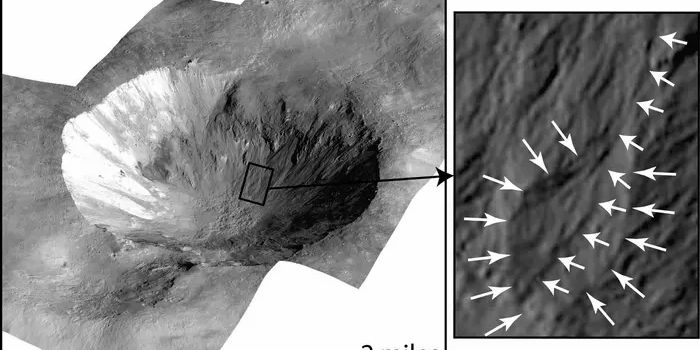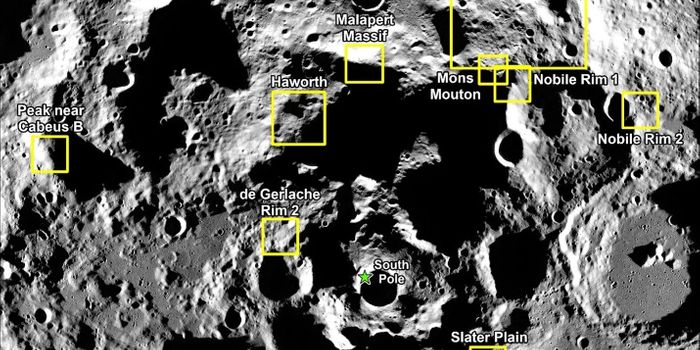An Internal Ocean Lurking Under the Surface of Small Saturn Moon
In a recent study published in Icarus, Alyssa Rhoden of the Southwest Research Institute and collaborators, present evidence that the innermost moon of Saturn, known as Mimas, may have a liquid internal ocean hiding beneath its surface. Mimas is host to one of the most cratered surfaces in our solar system; the Herschel crater covers nearly one third of the surface of this body, giving the moon a similar appearance to the Death Star from the “Star Wars” franchise.
Dr. Rhoden and the team had intended to use data obtained by the Cassini mission, a collaboration between NASA, the European Space Agency, and the Italian Space Agency to study Saturn and its natural satellites. Their intention was to prove that this tiny moon was a frozen, inert satellite, but what they found instead was much more interesting.
Cassini detected an oscillation -or wobble- in Mimas’ rotation, otherwise known as a libration. These types of signatures are often evidence of a geologically active world. The wobble that was detected could mean that there is a liquid ocean churning under the solid icy surface of this moon.
In the past few decades, one of the most important discoveries in the field of planetary science was that worlds with oceans hidden under layers of ice or rock are quite common in our solar system (e.g., Europa, Titan, Enceladus, Pluto). According to Dr. Rhoden these “stealth ocean worlds” have “greatly expanded the definition of a potentially habitable world in our solar system and beyond.” In the past, scientists were only searching for worlds like Earth with the potential to host liquid oceans on their surface, but the potential for there to be liquid water oceans hidden below the surface of worlds has expanded the conditions to search for possible life in our solar system and the galaxy.
The surface appearance of Mimas tricked the team because it did not show any of the normal signs of geologic activity, like the fracturing observed on the surfaces of Europa and Enceladus, and it was heavily cratered, meaning that the surface of the moon has not changed dramatically over geologic timescales. To investigate the possible existence of an internal ocean under the surface of Mimas, the team built a numerical model to reproduce the oscillation they observed which would have been produced by gravitational interactions with Saturn. According to the model, these gravitational interactions, otherwise known as tidal forces, heat the moon’s interior, which would allow for there to be a liquid ocean under a thick shell of ice (approximately 24-31 km, or 15-20 miles thick).
Although the model supports the existence of a present-day ocean hidden under the surface of Mimas, the team says that the results are hard to reconcile with the current understanding of a moon’s ability to support hidden oceans. Future space missions, much like the Juno spacecraft which is studying the composition and structure of the interior of Jupiter, or the Europa Clipper spacecraft which is designed to study the Galilean moon Europa, could help understand this compelling target and the origin of interior oceans on other worlds.
Sources: Southwest Research Institute, Space.com









